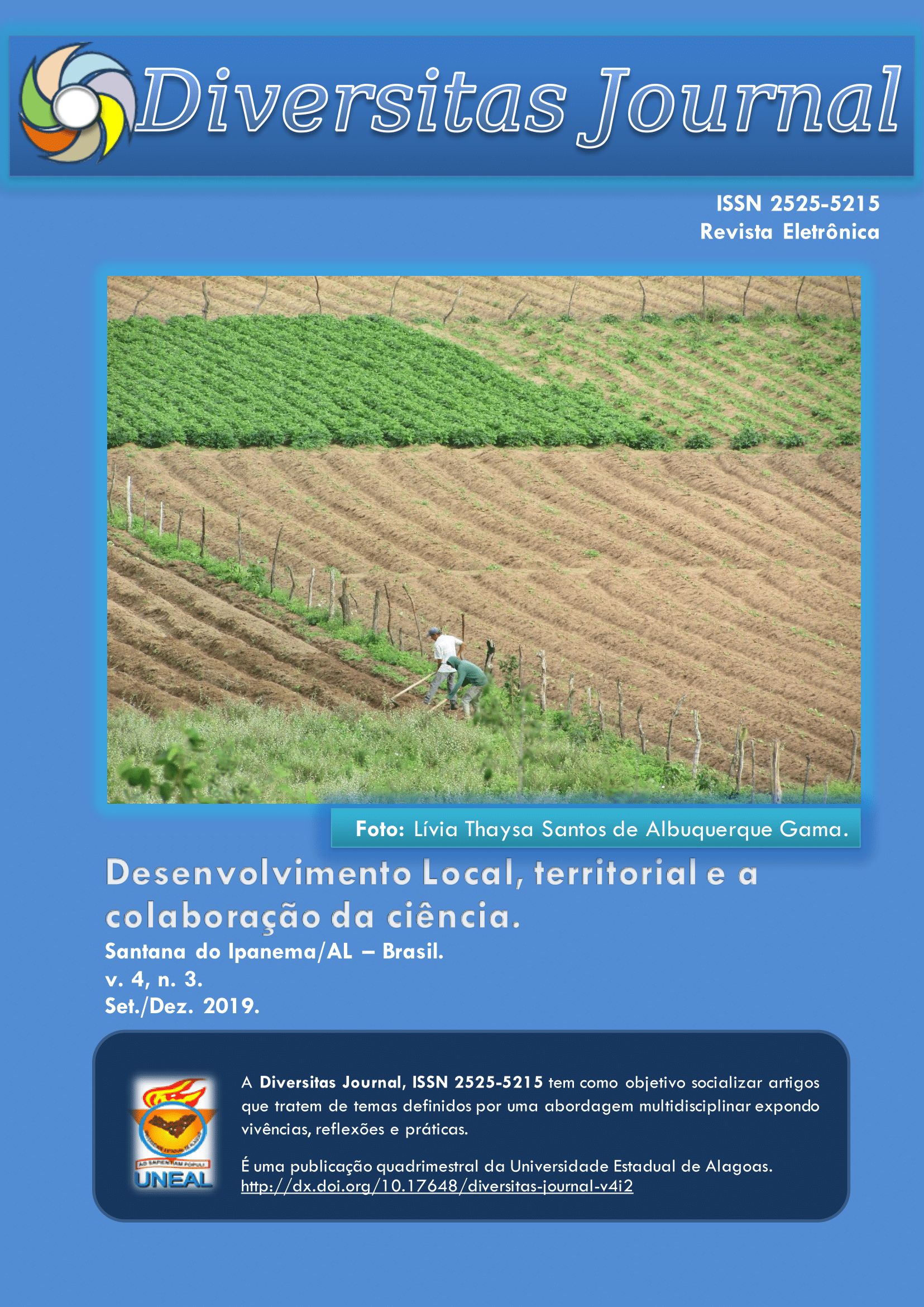Pesticides in the Semiarid of Alagoas: chemically dependent agriculture and its contradictions
DOI:
https://doi.org/10.17648/diversitas-journal-v4i3.874Abstract
ABSTRACT: Pesticides integrate the chemically dependent prevailing model in brazilian agriculture, and it is part of the complex capitalist totality in which agrochemical mega-corporations enjoy enormous centrality. The following lines have as objective to analyse the contradictions underlying dependent
agriculture of pesticide in the Semiarid of Alagoas, providing a reflective input from data and information of outstanding relevance. The phenomenon of pesticides materializes in an unequal manner in the Semiarid of Alagoas and has resulted in acute socioenvironmental contradictions. The research was able to identify a significant incidence of human intoxication and risks of water and soil contamination with the chemical ingredients used in the plantations. In addition, it was found the subjection of income from peasant land to the capital by means of the regular purchase/sale of various pesticides. In the text are transmitted primary and secondary data collected throughout the investigation, through field visits to some of the communities situated on the banks of the Sertão Channel and the Moxotó river, Mesoregion of Sertão, western portion of the Semiarid, and collected through consultations with several state agencies.
KEYWORDS: pesticides, capital, land income
Metrics
Downloads
Published
How to Cite
Issue
Section
License
Copyright (c) 2019 Lucas Gama Lima, Anderson Ribeiro Miranda, Érica Franciele da Silva Lima, José Rodolfo da Silva Santos, Jefferson Araújo Nascimento

This work is licensed under a Creative Commons Attribution 4.0 International License.
The Diversitas Journal expresses that the articles are the sole responsibility of the Authors, who are familiar with Brazilian and international legislation.
Articles are peer-reviewed and care should be taken to warn of the possible incidence of plagiarism. However, plagiarism is an indisputable action by the authors.
The violation of copyright is a crime, provided for in article 184 of the Brazilian Penal Code: “Art. 184 Violating copyright and related rights: Penalty - detention, from 3 (three) months to 1 (one) year, or fine. § 1 If the violation consists of total or partial reproduction, for the purpose of direct or indirect profit, by any means or process, of intellectual work, interpretation, performance or phonogram, without the express authorization of the author, the performer, the producer , as the case may be, or whoever represents them: Penalty - imprisonment, from 2 (two) to 4 (four) years, and a fine. ”















.png)




